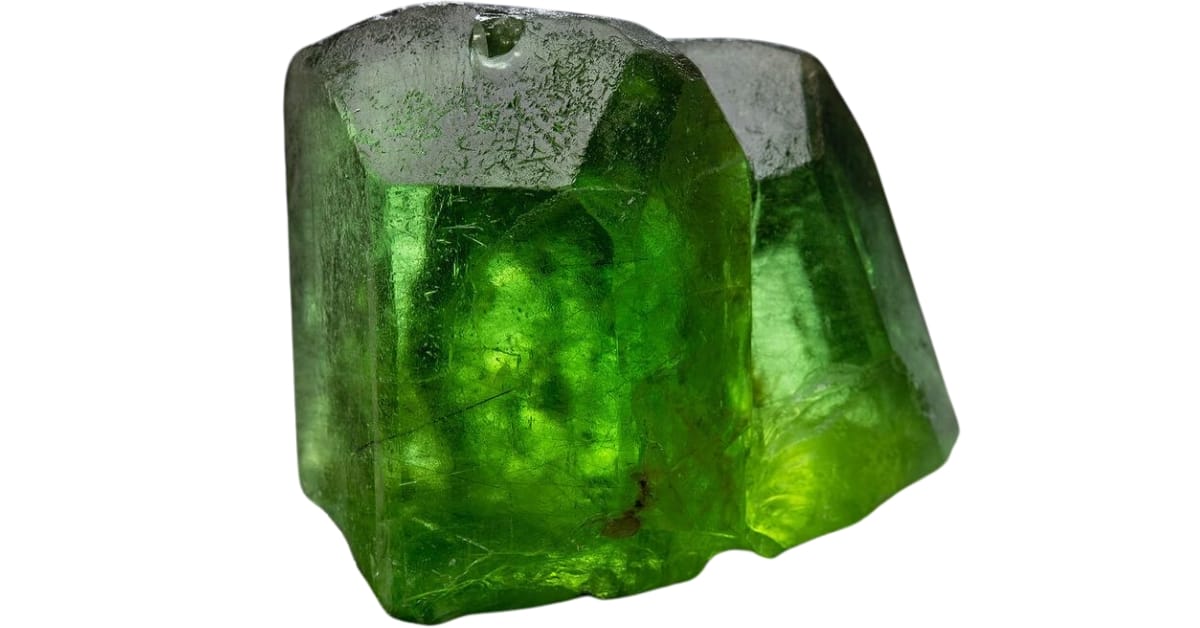Peridot is a special kind of gemstone that comes from the mineral olivine. It has a beautiful green color that ranges from a light, lime green to a deeper, olive green. This variety of greens is what makes it so unique and sought after!
It forms deep inside the Earth’s mantle and reaches us through volcanic eruptions. Sometimes, it even comes from space, delivered by meteorites! How awesome is that?
There are many types of peridot, and they come from all over the world. Each place gives it a unique touch, making some types rarer and more fascinating than others. Join us as we get to know these different peridot types!
The 13 Different Types Of Peridot And What They Look Like
Peridot not only catches the eye with its vibrant colors but also holds a great deal of worth. The value of peridot can vary greatly depending on where it comes from and its quality.
As we explore the different types, we’ll see how the origins of this gem can affect its appearance and value.
Myanmar Peridot (Burmese Peridot)
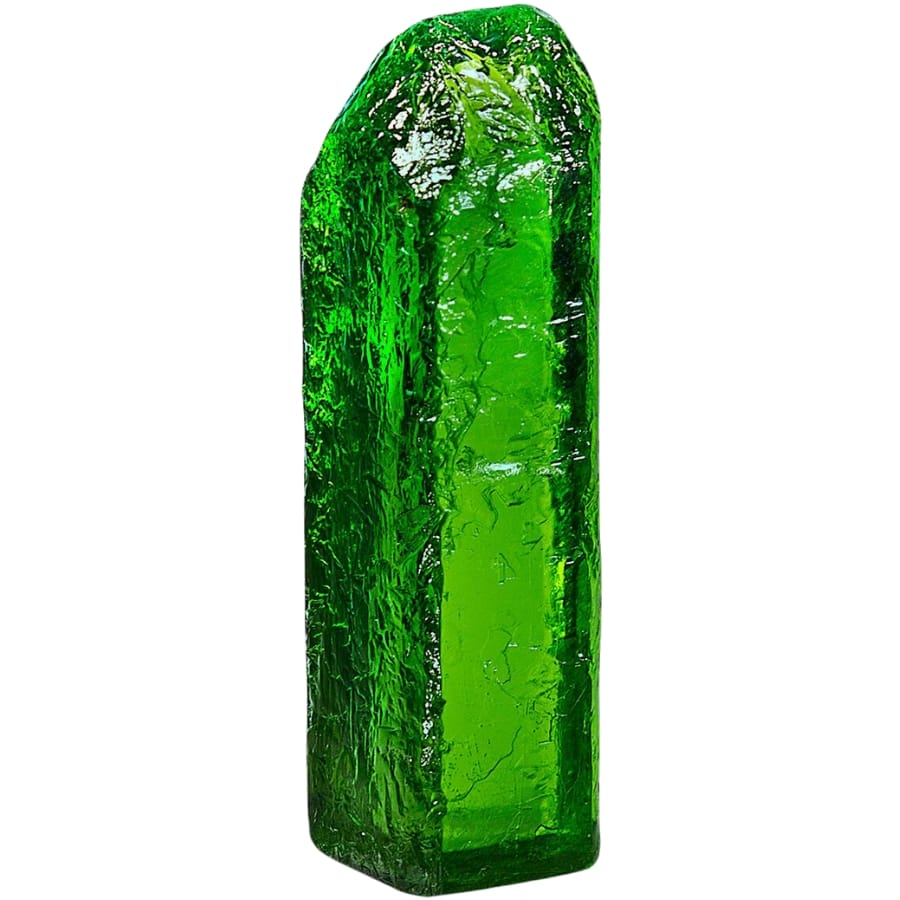
Myanmar peridot stands out for its rich, olive to bright green color, which can have a slight golden hue under the sun.
Aside from having exceptional clarity, this peridot type can also come in large gem-quality stones, making them highly sought after. Its vibrant color is considered among the best in the world.
The intensity and saturation of green in Myanmar peridot come from the right amount of iron content in its crystal structure, which absorbs light in just the right way to give off that gorgeous green glow.
This gemstone has been treasured for centuries. Some of the large peridot stones set in medieval European churches were even originally mistaken for emeralds.
Where you can find Myanmar peridot (Burmese peridot)
Myanmar peridot is mainly found in the mountainous regions of the country, especially in the Mogok area. This gem also pops up in the Pyaung Gaung area. These spots are rich in volcanic rocks, which is where peridot loves to grow.
If you need more guidance on where to find peridot, check out our guide.
Pakistani Peridot
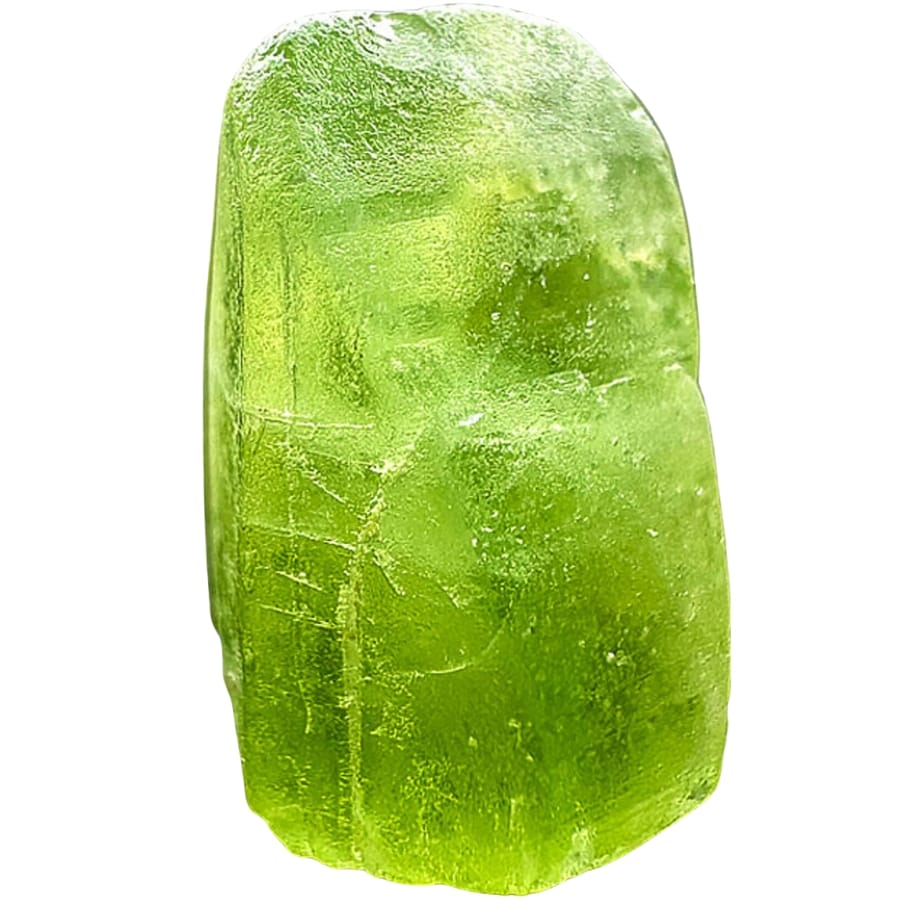
Pakistani peridot shines brightly with its unique, intense green color. It sparkles with a lively lime green that can sometimes lean towards a deeper olive shade.
It’s made up of olivine, which is rich in magnesium and iron. These elements are key to giving this gem its distinctive color.
Unlike some other peridots, it’s known for being exceptionally clear, which means it has fewer blemishes or inclusions. It’s also valued for its durability, which makes it perfect for all kinds of jewelry.
But this beauty is not exactly easy to find. Pakistani peridot is found in one of the most challenging terrains. The high-altitude mines where it’s extracted are among the most remote in the world.
Where you can find Pakistani peridot
Pakistani peridot is mostly found in the northern part, especially in Kashmir and the beautiful, rugged landscapes of Gilgit-Baltistan. These are known for their high mountains and deep valleys, where the peridot forms in the rocks.
But the most famous spot where you can find it is the Suppat region. Here, the peridot grows in volcanic rock which helps create its stunning green color and clarity.
Arizona Peridot
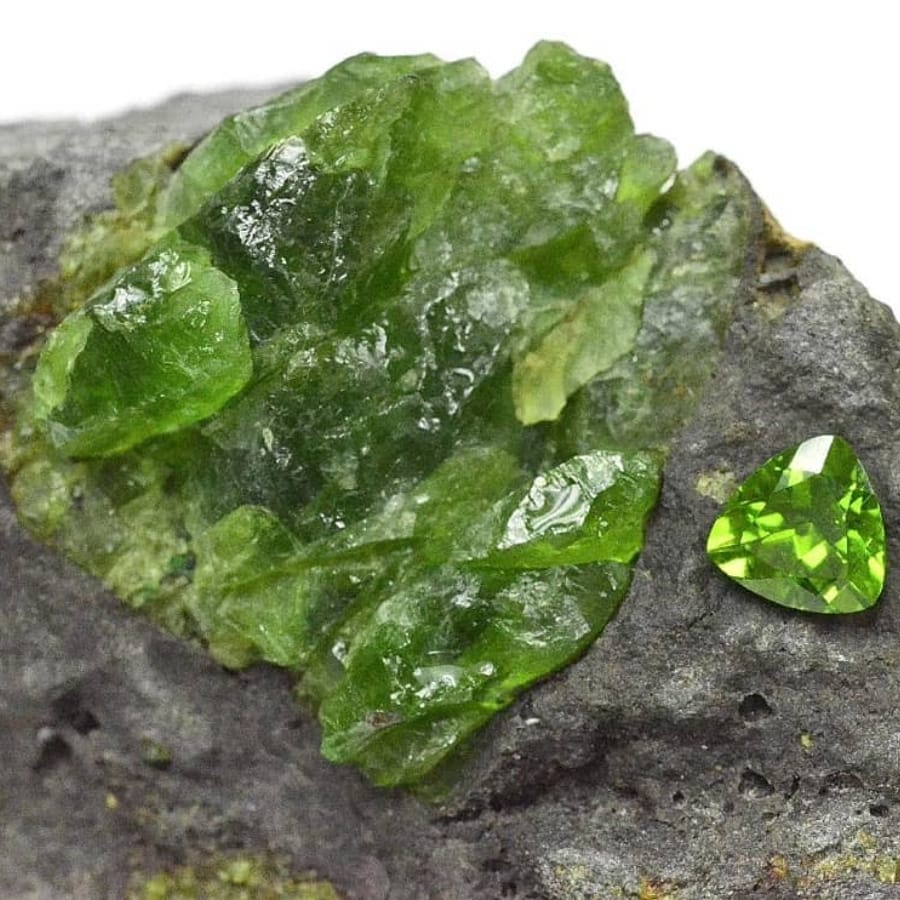
Arizona peridot displays a bright, lively green that can range from yellow-green to olive green. Its color and the way it shines make it a favorite for jewelry.
This gem often has a slightly yellowish tint compared to the deeper green shades found in other peridot types, giving it a distinctive, sunny appearance.
It’s valued for its availability in a variety of sizes, including very small grains that are perfect for detailed beadwork. Its versatility and the brightness of its color make it popular for all kinds of jewelry, from rings and necklaces to bracelets and earrings.
Arizona peridot is an important part of the local culture where it’s found. Its presence on the reservation has provided economic benefits to the Apache community.
Where you can find Arizona peridot
Arizona peridot is mainly found on the San Carlos Apache Reservation. This area is full of rugged landscapes and volcanic rocks. Peridot Mesa, a well-known location within the reservation, is especially famous for producing beautiful gems.
Chinese Peridot
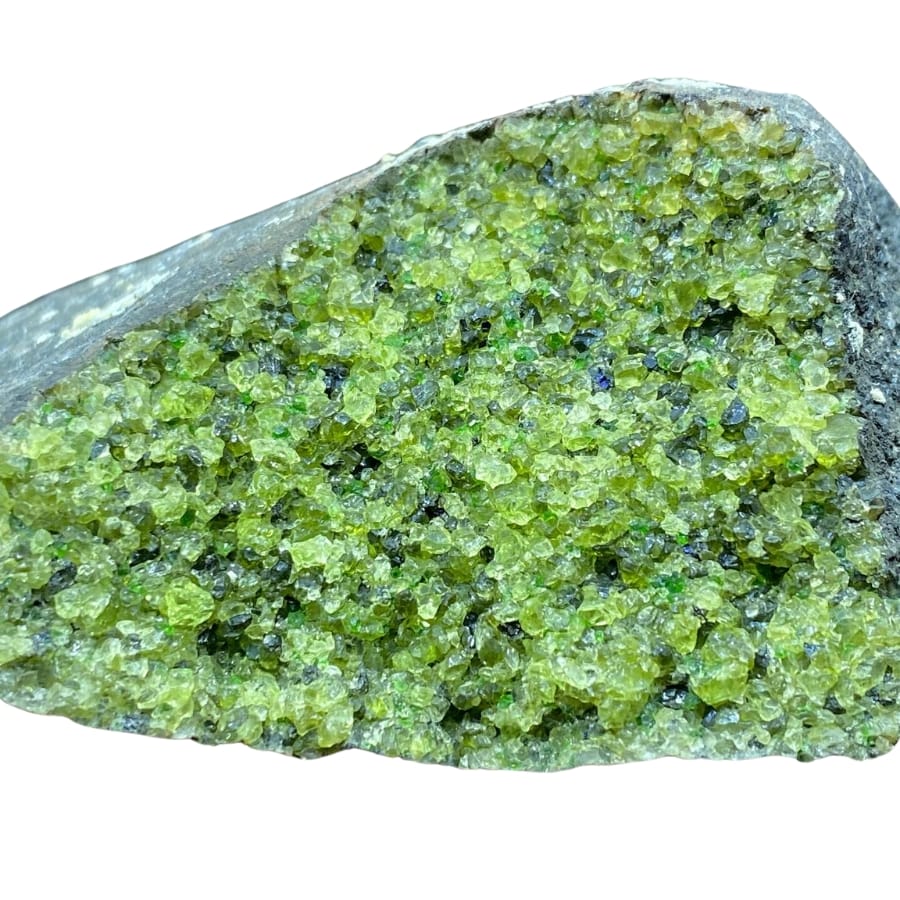
Chinese peridot shines with a vibrant, light green color. China has been a source of this for many centuries, even trading it along the ancient Silk Road. This trade helped to spread it across Asia and Europe.
This gem has a bright, almost neon green shade that stands out from the deeper greens of peridots from other places. This makes it a popular choice for adding a pop of color to jewelry.
It offers a beautiful quality at a price that’s more accessible to many people, making it a favorite for those looking to add a touch of green to their collection without breaking the bank.
Plus, Chinese peridot can be found in a variety of sizes, making it versatile for different types of jewelry.
Where you can find Chinese peridot
Chinese peridot is mostly found in the northeastern part of China, particularly in the provinces of Liaoning and Hebei. The conditions in these places are perfect for giving this type of peridot its distinct light green color.
Red Sea Peridot
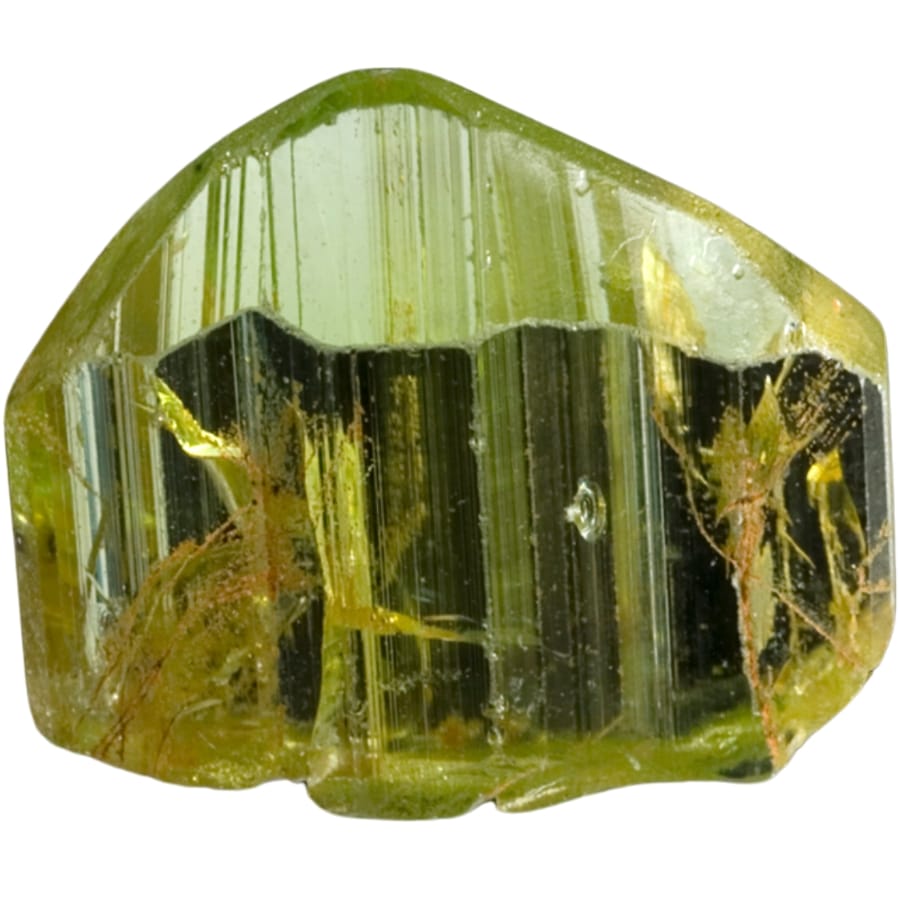
Red Sea peridot sparkles with a unique green, ranging from light lime to dark olive. The clarity and size of this gem are exceptional, making them perfect for fine jewelry
It has a story that goes back thousands of years. In fact, the Red Sea peridot is one of the oldest known gemstones used in jewelry. Ancient Egyptians called it the “gem of the sun,” treasuring its radiant green as a symbol of nature and beauty.
People value this peridot type for more than its looks. Its history adds a layer of mystery and romance.
On top of this, finding a high-quality Red Sea peridot is rare, which only makes it even more precious.
Where you can find Red Sea peridot
Red Sea peridot is famously found on Zabargad Island, also known as St. John’s Island, in the Red Sea. This island is one of the oldest known sources of peridot in the world.
Vietnam Peridot
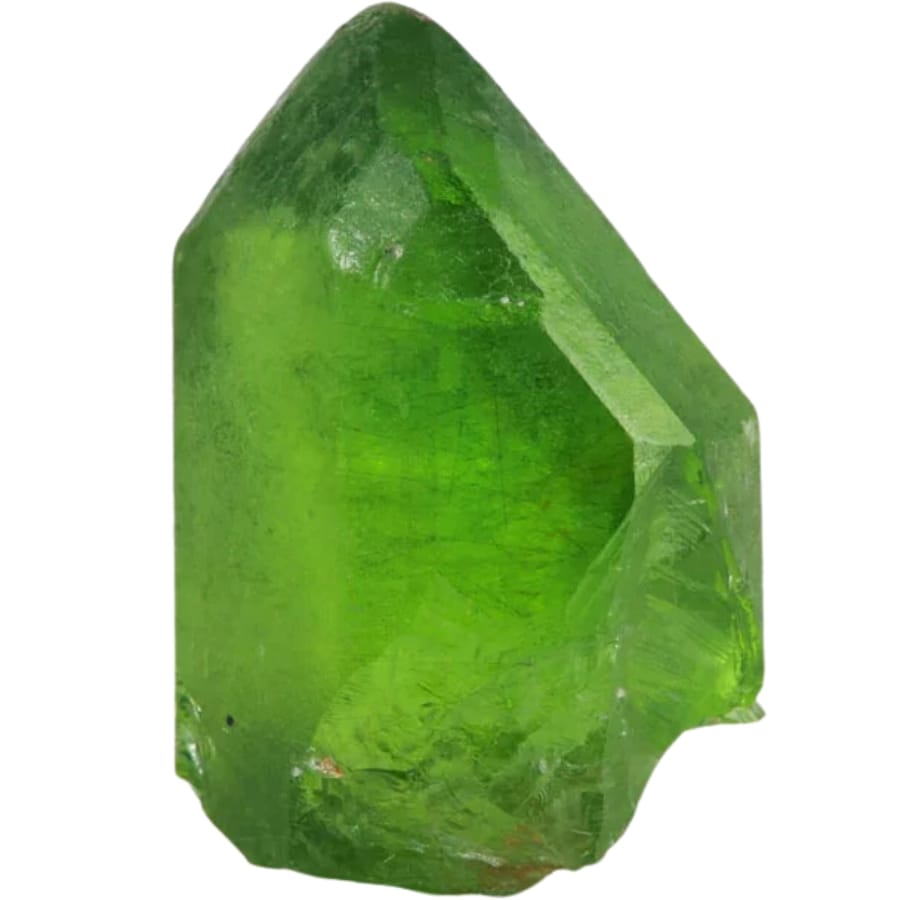
Vietnam peridot’s a real eye-catcher— its color ranges from a light, almost yellow-green, to a deeper olive. Its brightness and clarity set it apart from others, with some stones even showing a sparkling, almost glassy appearance.
The lively green color of this gem makes it seem like it glows from within. It’s known for having fewer inclusions compared to other types of peridot.
This clear quality means that light can pass through it beautifully, making the gem sparkle brilliantly.
This gemstone is born in volcanic areas, where the intense heat and pressure create its stunning colors and clarity.
Where you can find Vietnam peridot
Vietnam peridot is mostly found in the beautiful, lush areas of the country. One notable spot is the Central Highlands, where the unique mix of minerals in the soil and the volcanic activity create the perfect nursery for these green gems.
Kenya Peridot
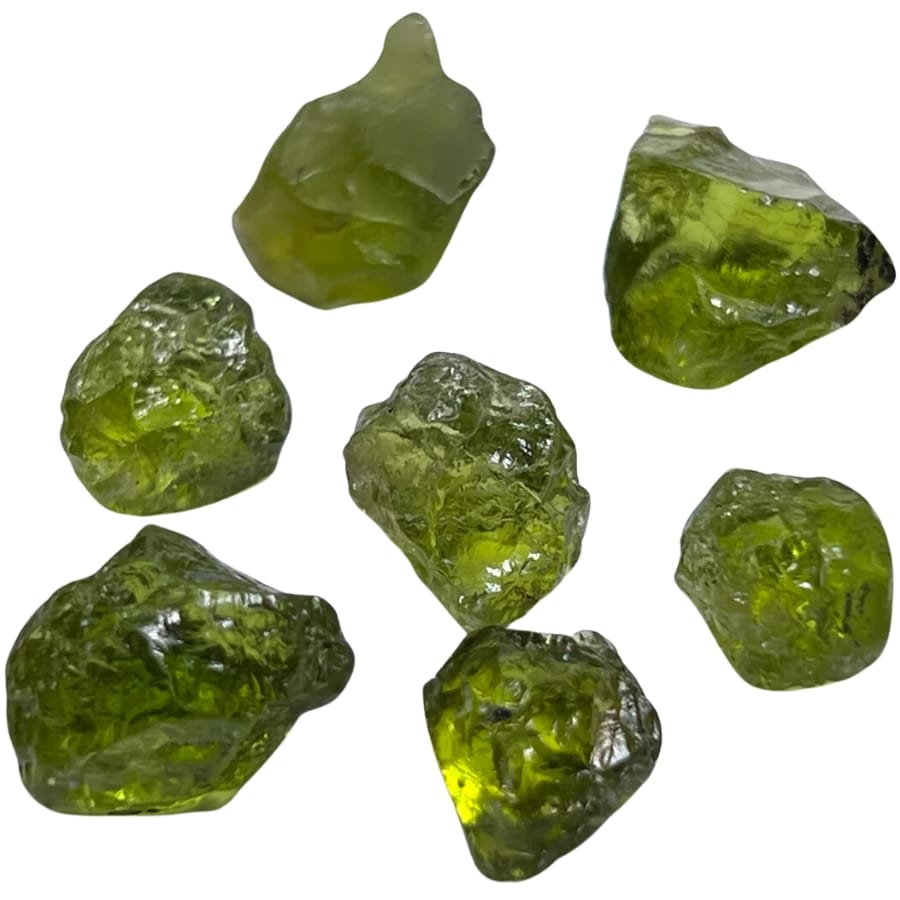
Kenya peridot glows with a rich, vibrant green that ranges from light to deep olive shades.
What sets it apart is its raw, natural beauty. It often has a lively, bright appearance that looks stunning in sunlight.
This natural wonder can show a great variety of greens. The mix of minerals and the environment in Kenya contribute to the unique color and clarity of this gem.
People value Kenya peridot for its earthy, natural look. It’s not just its beauty that’s appealing but also its authenticity. This genuine quality makes it a favorite for those who love gems that reflect the natural world.
Where you can find Kenya peridot
One of the most famous places where you can find Kenya peridot is the Great Rift Valley, a massive area with lots of volcanoes and rich soils. Another spot is the Tsavo National Park.
Norway Peridot
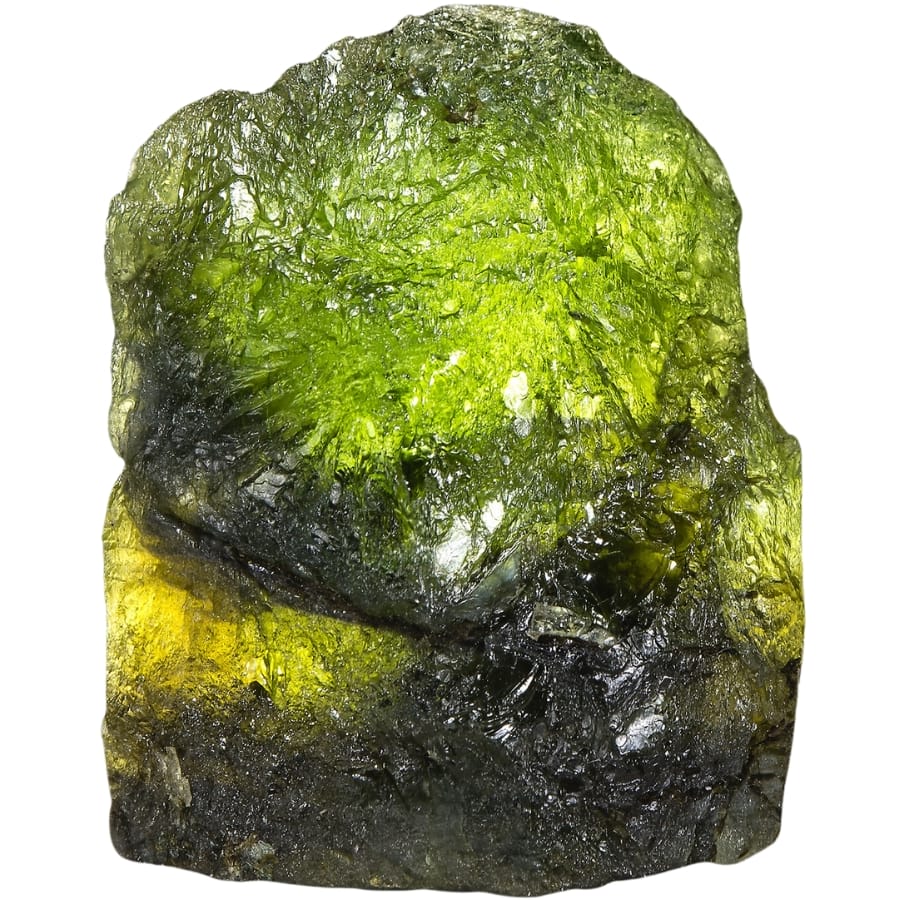
Norway peridot shows off shades of green that range from a light, almost grassy color, to a deeper, richer olive. It has crystal clarity and subtle hints of yellow that can sometimes be seen when the light hits just right.
This blend of colors gives it a refreshing, natural look that’s different from the more common vibrant greens of other peridot types.
Its rarity and the special qualities it brings to jewelry add to the value of this gem. It has a kind of understated elegance that makes it perfect for different pieces.
The fact that it’s not as widely available as other peridots adds to its appeal, making it a sought-after gem for collectors and those looking for something truly special.
Where you can find Norway peridot
Norway peridot is often found in the country’s beautiful, rugged landscapes. Some of the best spots for finding it are in areas with a history of volcanic activity, like the Sunnhordland region.
Pallasite Peridot (Meteorites)
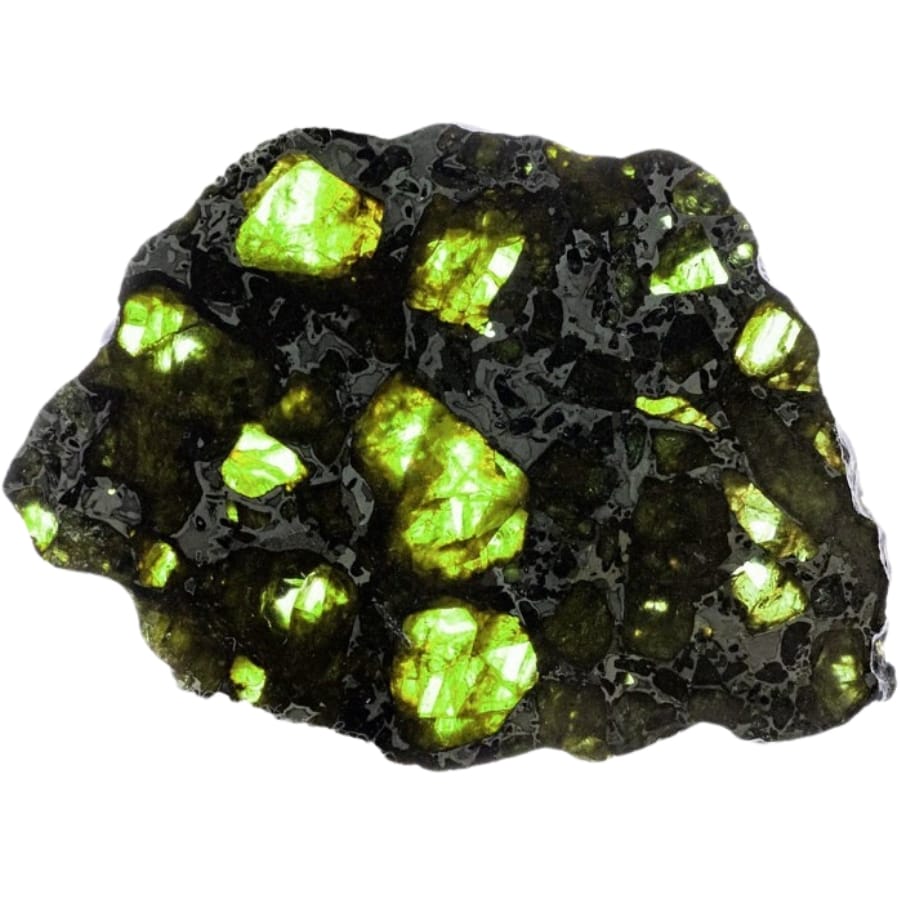
Pallasite peridot is a super cool type of peridot that comes from space! It’s set in metal from outer space, giving it a look that’s out of this world. Each piece has a bright, lime-green color that glows when light passes through it.
What makes Pallasite peridot different is its cosmic origin. You’re not just holding a gem; you’re holding a piece of the universe. This isn’t your everyday peridot.
It’s valued not only for its beauty but also for its incredible journey from the stars to our hands.
It’s named after the scientist who first studied this kind of meteorite, Peter Pallas, way back in the 1700s. Finding Pallasite peridot is seriously rare, making it a prized find for collectors and anyone fascinated by the cosmos.
Where you can find pallasite peridot (meteorites)
Pallasite peridot doesn’t really “grow” here like other peridots. Instead, it arrives here inside meteorites that have traveled through space. When these space rocks land on Earth, we sometimes find them with beautiful green peridot crystals inside.
These meteorites have been found in various parts of the world, including Kansas in the USA, Siberia in Russia, and even parts of Africa and Antarctica.
Australian Peridot
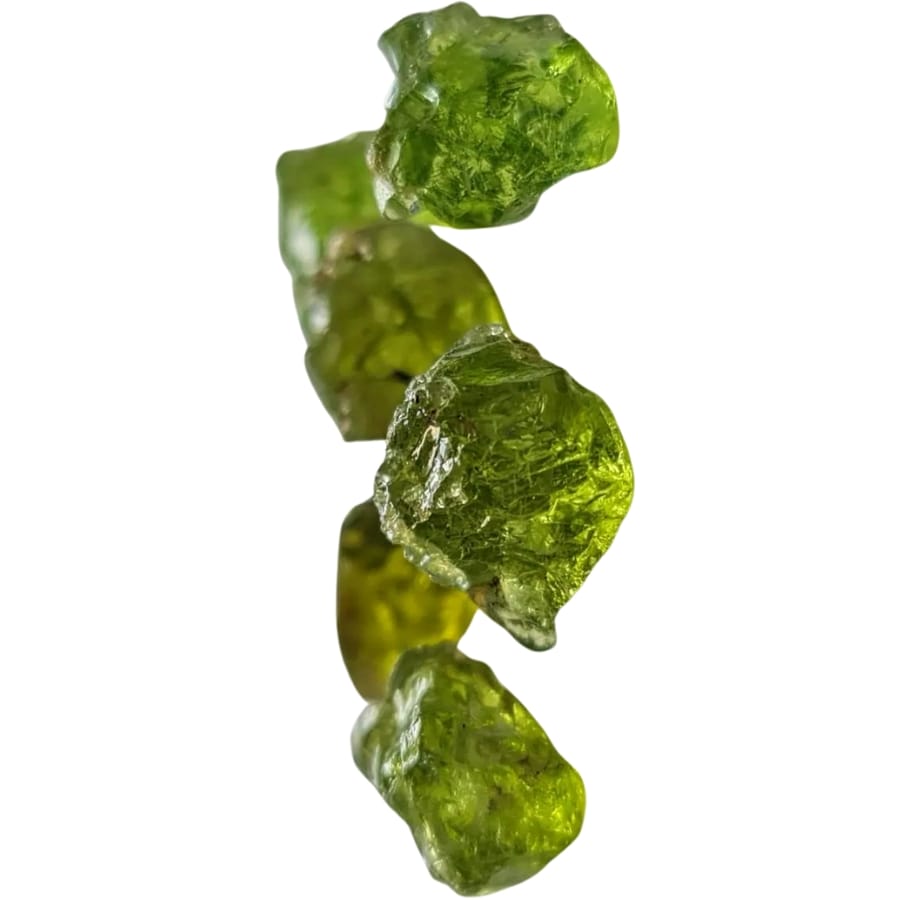
Australian peridot has a bright and lively green color. It ranges from a soft, grassy green to a deeper olive shade, shining brightly when the light hits it just right.
Its unique combination of color and sparkle set it apart. It’s found in areas with rich volcanic soil, which helps create its stunning hues.
This gem is not only beautiful but also tough, able to stand up to everyday wear, which makes it popular for rings, necklaces, and bracelets.
Australian peridot’s natural beauty adds a touch of elegance to jewelry. It shares its origins with many of the country’s unique plants and animals, all of which have adapted to thrive in Australia’s unique environment.
Where you can find Australian peridot
Australian peridot is found in some amazing spots across the country, often where you least expect it. You can find it in Western Australia, known for its vast, open landscapes. Another spot where it’s found is the Northern Territory.
Antarctica Peridot
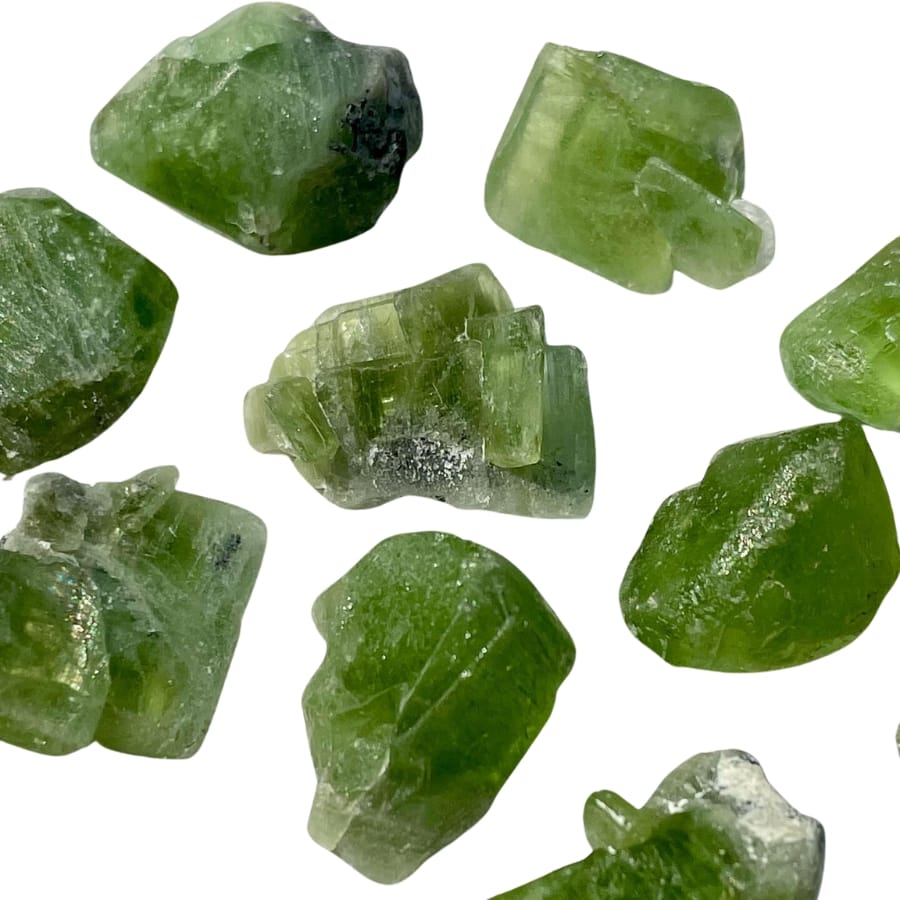
Antarctica peridot possesses a unique green color that goes from light lime shades to deeper olive greens. It comes from one of the coldest and most remote places.
This peridot’s journey from the icy landscapes of Antarctica to becoming a cherished gemstone is what makes it so special.
The clarity and color of this peridot type are remarkable. Its icy birthplace contributes to its pure, vibrant hues. The extreme conditions of Antarctica, where it’s very cold and dry, help preserve it in a nearly pristine state.
Due to the continent’s protected status, Antarctica peridot is not commercially mined. These are of scientific interest more than commercial value.
Where you can find Antarctica peridot
In Antarctica, peridot is found in some pretty unexpected spots. Places like Mount Erebus, the southernmost active volcano on Earth, provide the perfect conditions for it to form.
Hawaii Peridot
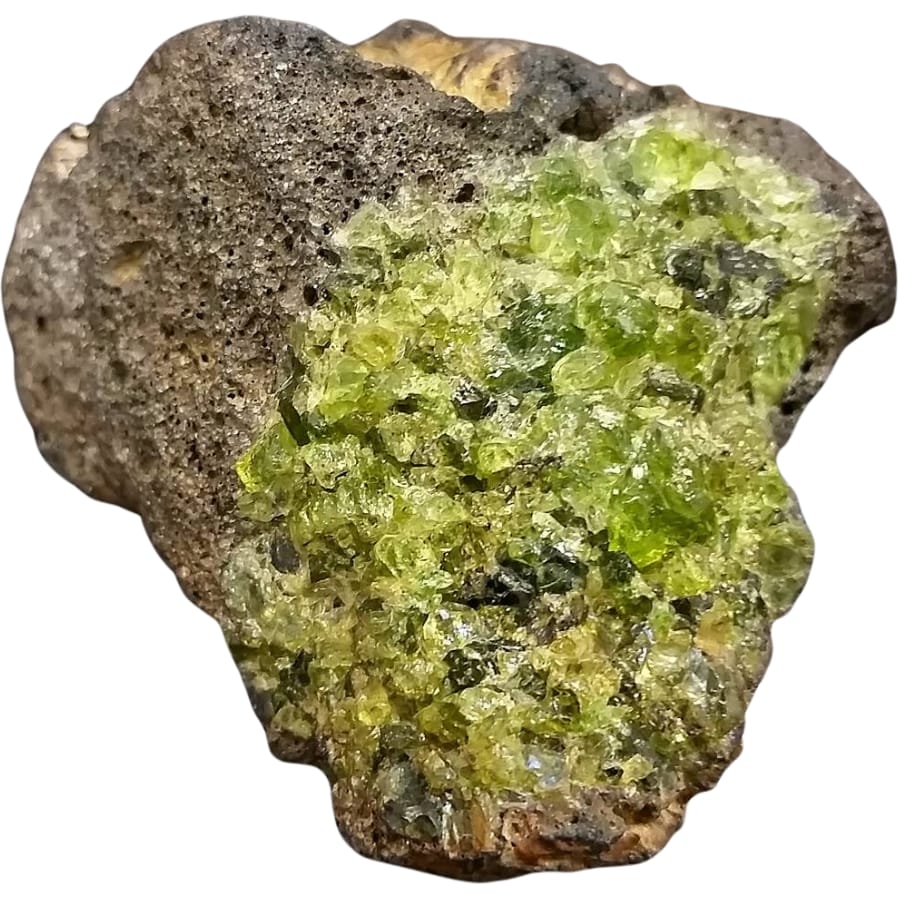
Hawaii peridot is like a piece of the island’s sunny skies and lush landscapes turned into a gem. It glows with a bright green color that can range from a light, grassy hue to deeper olive green.
Just like the clear Hawaiian waters, this peridot stands out because of its clarity and the way it sparkles. The heat and pressure from volcanoes create these stunning green stones, making them a natural symbol of Hawaii’s fiery origins.
Hawaii peridot is often found in smaller sizes, but its vivid color and clarity make it a beloved choice for jewelry, adding a touch of tropical beauty to any piece.
Sometimes, it can be found on the beaches, mixed in with the sand, where it’s washed ashore by the waves.
Where you can find Hawaii peridot
Peridot is mostly found around areas with lots of volcanic activity in Hawaii. Papakōlea Beach, also known as Green Sand Beach, on the Big Island, is one of them.
This beach is one of the only places in the world where you can find sand that’s actually tiny grains of peridot.
New Mexico Peridot
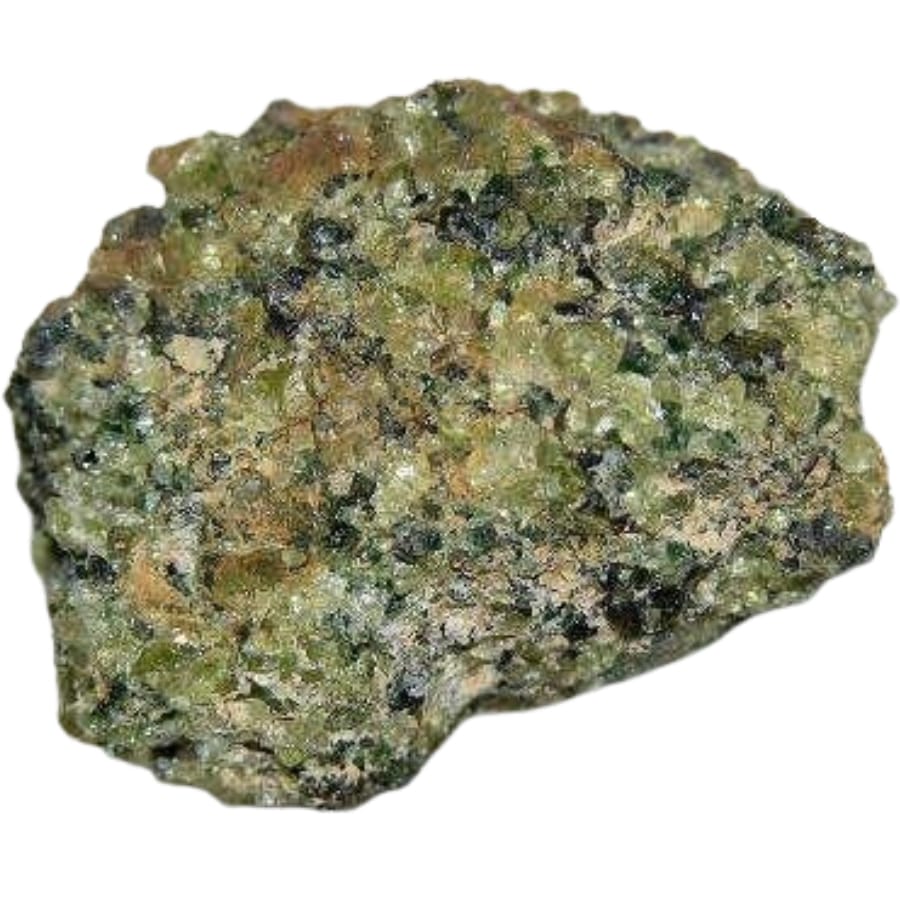
New Mexico peridot displays a bright, lively green that catches your eye. Its shades range from light, lemony greens to deeper olive tones. Its clarity and the way it lights up in the sun make it look like tiny beacons of light.
It’s special because it reflects the unique landscape of New Mexico, from its desert plains to its rugged mountains.
It’s a gem that brings a touch of the wild, untamed spirit of New Mexico to jewelry collections.
In fact, the state’s native cultures have treasured these green gems for centuries, using them in jewelry and ceremonial pieces. This long history adds depth to its value, making it a symbol of the region’s heritage.
Where you can find New Mexico peridot
The Kilbourne Hole, a massive volcanic crater in the southern part of New Mexico, is like a giant bowl filled with rocks and minerals, including this bright green peridot.

